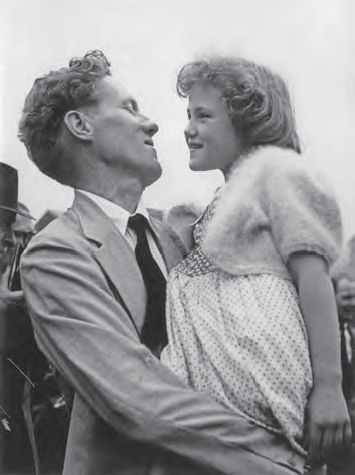
Physiology News Magazine
Book review
Everest: The First Ascent By Harriet Tuckey
Membership
Book review
Everest: The First Ascent By Harriet Tuckey
Membership
Austin Elliot
University of Manchester
https://doi.org/10.36866/pn.93.52

It is a cliché when a review tells you ‘read this book’ – but sometimes it is justified. Harriet Tuckey has produced, in nearly a decade’s labour, a marvellous biography of her father, Griff Pugh, a pioneer of post-war human applied physiology. If you are interested in scientific biography, or the history of – inter alia – mountaineering, high-altitude physiology, exercise physiology, studies of hypoxia or human thermoregulation, this book is for you. Anyone teaching students in any of the above areas will find it a brilliant source of anecdotes and history, as well as a pleasure to read.
Griff Pugh (1909–1994) was the key scientific consultant to, and a member of, the 1953 British Everest expedition that made the first successful summit attempt on the world’s highest mountain. As Tuckey recounts, his input encompassed designing the expedition’s boots, clothing, tents and stoves, in addition to determining the oxygen-breathing regimes, fluid intake schedules – critically important, and neglected in all previous expeditions – food and personal hygiene recommendations and diets and supplies. The success of the 1953 Expedition, where several celebrated British expeditions of the ‘20s and ‘30s had failed – most famously the 1924 one where the climbers George Mallory and Sandy Irvine disappeared – was quite likely down to the systematic scientific approach adopted. Indeed, Pugh’s ideas became the blue-print for high-altitude climbing with oxygen over the following two decades and beyond.
Though Pugh’s key role in the Everest ascent has been reasonably well-known in the scientific and medical community via the writings of co-workers like (1953 Expedition doctor) Mike Ward, Jim Milledge and John West, it is largely missing from the popular accounts of the Everest ascent that appeared at the time and afterwards. Tuckey makes the case convincingly that this reflected in large part the desire of key figures like expedition leader Sir John Hunt to present the ascent as a triumph of the ‘heroic human spirit’ – and more specifically of the Imperial British one. This, together with a kind of instinctive distaste for science that Tuckey traces to the pre-war public school amateur ethos prevalent in the climbing clubs, means that Pugh’s role in the expedition has remained grossly under-appreciated. Pugh himself – characteristically – also contributed to his being edited out of the record by never writing a definitive mass-market account of his work.
Pugh, an Olympic skier and doctor who came to physiology via wartime work running a mountain warfare ski school in the Lebanon, spent his entire scientific career working for the MRC. Though highly regarded by his scientific peers, and notably by Institute Director Sir Peter Medawar, Pugh never attained great organisational rank or prominence – largely through his disdain for administration and office politics. His eccentricity in his chosen ‘irascible gentleman scientist’ persona comes over strongly in Tuckey’s book. The most striking anecdote is the one where Pugh, driving his pregnant and in labour wife, Josephine, to hospital in his beloved sports car, drops in at an Everest Expedition Reunion Party at the Café Royal in Regent Street for a few minutes and then forgets he has left her waiting outside in the car.
Though Pugh’s high-altitude work on the Everest ascent and the later 1960 Silver Hut expedition gets pride of place, Tuckey also gives fascinating accounts of his work with endurance swimmers and elite athletes, and his interest in outdoor survival. She rightly emphasises the real-world consequences of her father’s work. Pugh’s influence was truly far-reaching, even if his name has been largely forgotten outside science.
The book is also a touching account of really getting to know a parent posthumously. Tuckey and her father were estranged during his life, and the book movingly describes her journey, long after his death, to an appreciation of him and his work. As she writes, it is through this investigation that she manages to understand her father in a way which had eluded them during his life. This personal voyage, deftly described, runs through the book like an additional thread,
In summary, this is a wonderful book. You should read it.

